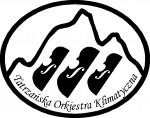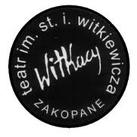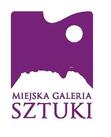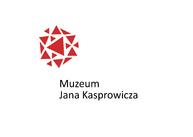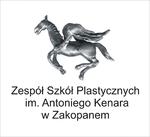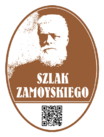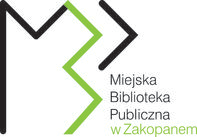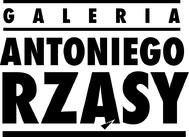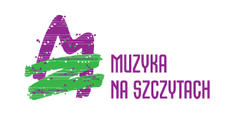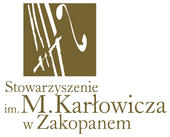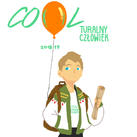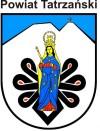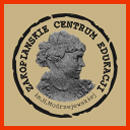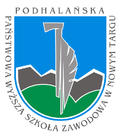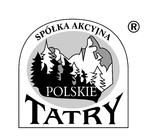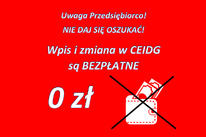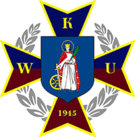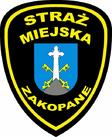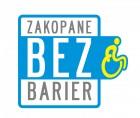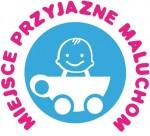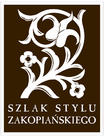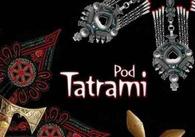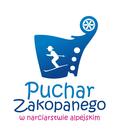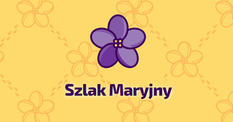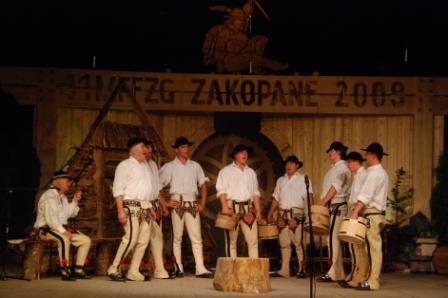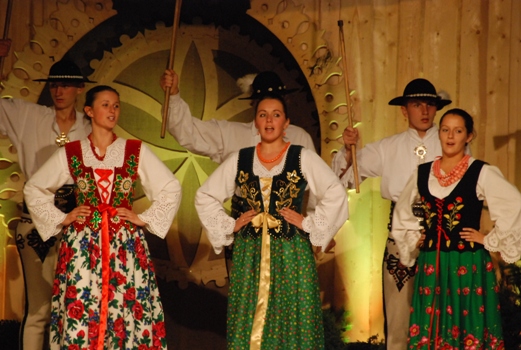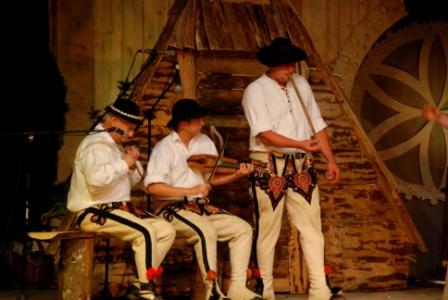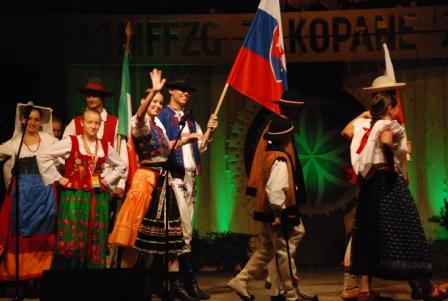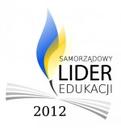Zakopane’s locals, descended from old highland families, look after their traditions, deeply rooted in highland forming on the one side, in banditry on the other. The thick highland dialect can often be heard on the streets, and during church- and national holidays, highlanders wear their traditional festive garments. Highlanders, (“górale") wear tight, cream or white trousers of thick wool, decorated with parzenica, a characteristic, embroidery in red and grey thread. A white linen shirt is worn, tied beneath the neck with decorative pins. Over this, leather waistcoats, or white, embroidered “cuchy" in summer, goatskin coats in winter. The most popular element of traditional highland dress is the hat decorated with shells and a eagle feather. Highlanders wear “kierpce" on their feet, shoes made from one piece of leather, tied round the calf with thongs.
Highland women wear heavily pleated skirts, usually decorated with floral pattern, although the old fashioned plain look is becoming popular again. The hem of the skirt is embroidered lace. A white, embroidered blouse, is worn under a sequinned corset, and finished off with beads and kierpce, and the traditional highland woman’s costume is complete.
Highland folk art. is alive and well. One outstanding feature of this art in past times was the various forms of decoration, from everyday household objects such as water or milk jugs, spoons, up to furniture and wooden buildings. Today, the most characteristic legacy of highland folk art is painting on glass.
Highland music is without equal. For, as they sing in the Tatras: “Górale, górale, góralska muzyka, cały świat obejdziesz, nie ma takiej nika" (Highlanders, highlanders, highland music goes around the Word, there’s nothing else like it anywhere). The characteristic vocals, found only here, and the elemental “zbójnicki" (bandit) dance, for example, has always caught visitors’ imagination. In Zakopane, as well as the nearby villages, folk groups are filled with the next generations of highland families. Today, young “górale" more readily wear the traditional costume, take part in folk competitions, and proudly proclaim their heritage and their association to the traditions of their forebears.
The biggest celebration of highland culture is the International Festival of Highland Folklore, since 1968 held annually at the end of August in Zakopane. At this time highland folk from all around the world gather to compete for the gold, silver and bronze “ciupagi", or alpenstocks. During the festival the whole town is alive with folklore, and everyone is a góral. For whoever finds himself in Zakopane during the Festival will return to us, to experience authentic folklore, to wonder at the beautiful costumes of many different mountain regions, and to feel the special atmosphere that is present at every festival.







